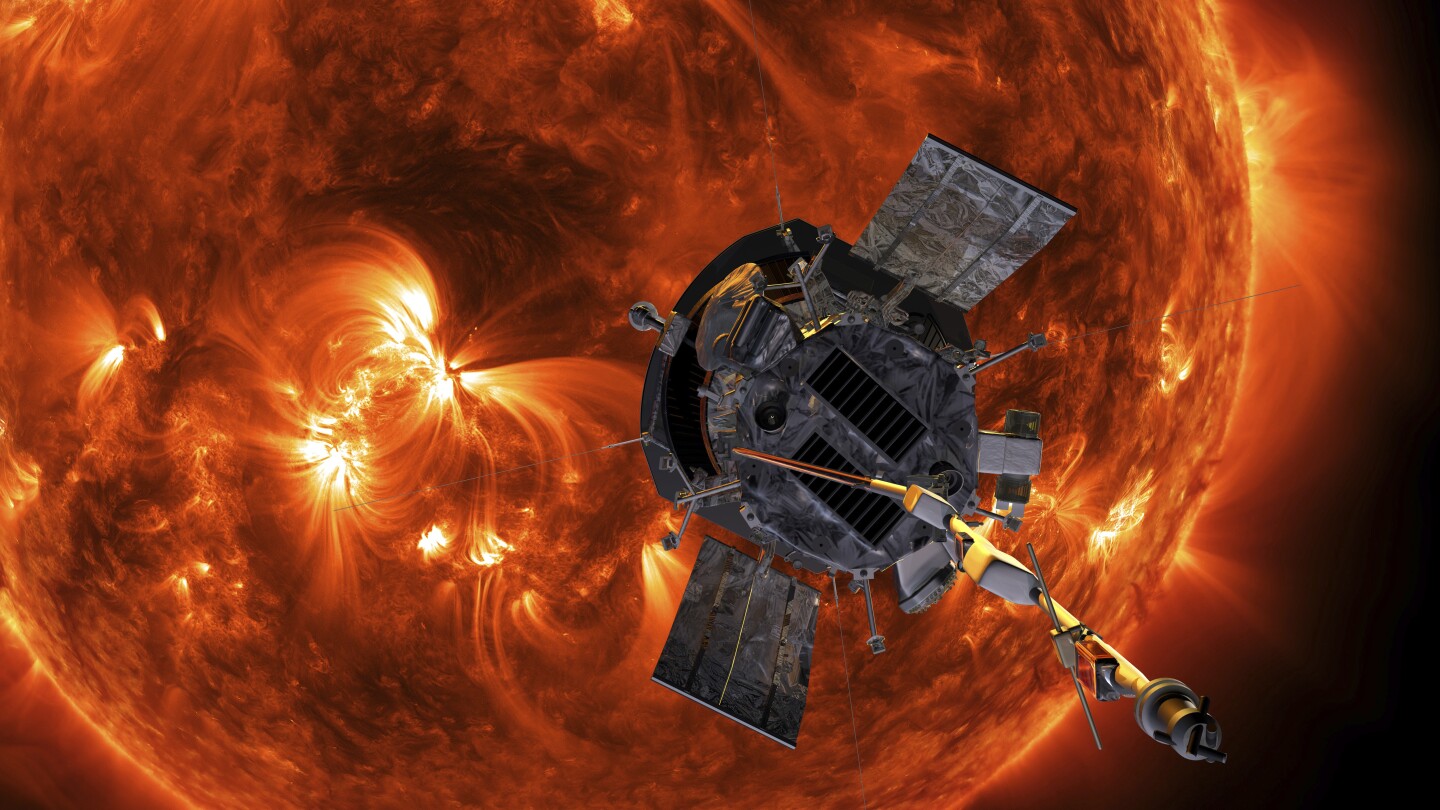Science
NASA’s Parker Solar Probe aims to fly closer to the sun like never before

The Parker Solar Probe: A Historic Journey to the Sun
In 2018, NASA made history by launching the Parker Solar Probe, a spacecraft designed to explore the Sun in unprecedented detail. This mission marked the first time a human-made object was sent to fly directly into the Sun’s corona, the outermost layer of the Sun’s atmosphere that becomes visible during a total solar eclipse. The Parker Solar Probe has since achieved remarkable milestones, including passing through the corona and breaking records for speed and proximity to the Sun. Its latest accomplishment is set to be its closest approach yet, a moment that promises to revolutionize our understanding of our solar system’s star.
Engineering Marvel: Speed and Heat Resistance
The Parker Solar Probe is not just a scientific endeavor; it’s an engineering marvel. During its closest approach, the spacecraft will hurtle through the Sun’s sizzling solar atmosphere at a staggering 430,000 miles per hour (690,000 kilometers per hour), making it the fastest human-made object ever built. To survive the extreme conditions near the Sun, the probe is equipped with a state-of-the-art heat shield capable of withstanding temperatures as high as 2,500 degrees Fahrenheit (1,371 degrees Celsius). This technology is crucial for protecting the spacecraft from the intense heat generated by the Sun’s proximity.
A New Era of Solar Exploration
The Parker Solar Probe’s mission is not just about breaking records; it’s about answering fundamental questions about the Sun. Scientists are particularly eager to understand why the Sun’s corona is hundreds of times hotter than its surface and what drives the solar wind, a stream of charged particles that constantly emanates from the Sun. These phenomena have puzzled researchers for decades, and the data collected by the probe promises to provide groundbreaking insights. By orbiting the Sun at a record-breaking distance of 3.8 million miles (6 million kilometers), the spacecraft will gather critical information that could shape our understanding of solar physics for generations.
The Sun’s Dual Nature: Life-Giving and Potentially Disruptive
While the Sun’s energy is essential for life on Earth, it also has the potential to disrupt our modern world. Solar storms, which are sudden releases of energy from the Sun, can interfere with radio communications and power grids, causing significant disruptions to daily life. Understanding these solar events is crucial for mitigating their impact on Earth’s technology. The Parker Solar Probe’s mission is not just about advancing scientific knowledge but also about protecting our planet from the Sun’s occasional outbursts. By studying the Sun’s behavior, researchers hope to better predict and prepare for these events.
The Sun’s Current Activity: A Time of Maximum Energy
The Sun operates on an 11-year cycle, with periods of high and low activity. Currently, the Sun is at the peak of this cycle, known as the solar maximum. This phase is characterized by increased solar flares and sunspots, which can lead to spectacular auroras appearing in unexpected locations. While these displays are breathtaking, they also remind us of the Sun’s power and unpredictability. As NASA’s Joe Westlake aptly put it, “The Sun is our closest, friendliest neighbor, but at times, it can be a little angry.” This duality underscores the importance of the Parker Solar Probe’s mission in understanding both the Sun’s life-giving qualities and its potential to disrupt our world.
Conclusion: Expanding Our Knowledge of the Universe
The Parker Solar Probe represents a significant leap forward in space exploration and scientific discovery. By venturing closer to the Sun than any spacecraft before it, the probe is paving the way for a new era of solar research. Its findings will not only deepen our understanding of the Sun but also have practical implications for protecting Earth from solar storms. As the probe continues its journey, it serves as a testament to human ingenuity and the boundless curiosity that drives us to explore the universe. The Sun may be our closest neighbor, but thanks to the Parker Solar Probe, it is no longer a complete mystery.